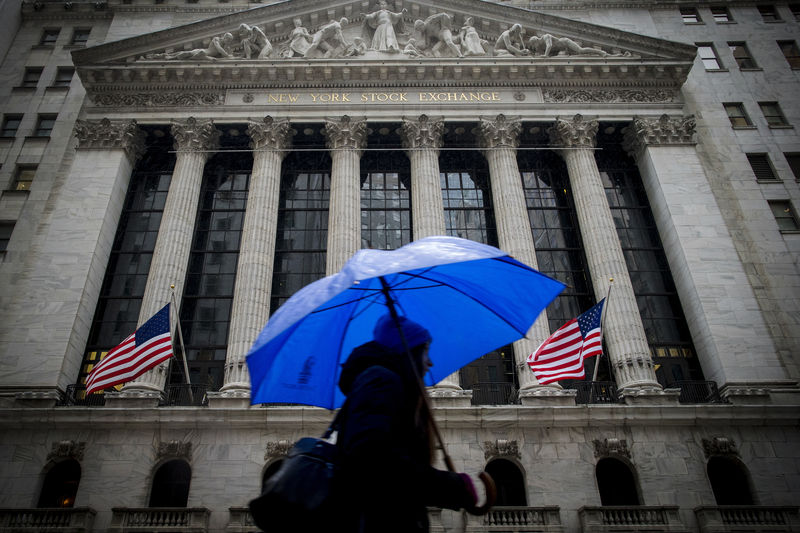Investing.com - Markets are focusing in on the impending publication of the November U.S. nonfarm payroll report, a highly-anticipated data point that may shed more light on the state of the American labor market and serve as a signpost for the Federal Reserve's future policy choices. Elsewhere, Apple (NASDAQ:AAPL) and its suppliers are reportedly aiming to move a quarter of global iPhone production to India, as the tech giant looks to reduce its reliance on China during a time of strained relations between the U.S. and Beijing.
1. November nonfarm payrolls ahead
The spotlight on Friday is squarely on the latest U.S. employment report, with investors hoping that the data will provide some clues into the Federal Reserve's upcoming monetary policy decisions.
Economists estimate that the U.S. added 180,000 roles in November, increasing slightly from 150,000 in the prior month. Average hourly earnings, a key gauge of wage growth, are seen rising at a monthly pace of 0.3% versus October, accelerating marginally from a previous reading of 0.2%. The unemployment rate in the world's largest economy, meanwhile, is expected to come in at 3.9%, matching October's level.
The figures will cap off a week of data releases which have indicated that an unprecedented series of interest rate hikes by the Fed may be working to soften labor demand. Job openings touched an over 2-1/2-year low and fewer workers resigned from their positions in October, while private employers added less roles than anticipated last month.
Cooling the labor market has been a major focus of the Fed's move to lift borrowing costs to their highest mark in more than two decades. In theory, a slowdown in demand for workers could alleviate some upward pressure on wages and, by extension, help achieve the Fed's ultimate objective: defusing elevated inflation.
2. U.S. futures turn lower
U.S. stock futures turned lower on Friday, as investors remained cautious as they awaited the November nonfarm payrolls report.
By 07:28 ET (12:28 GMT), the Dow futures contract had dipped by 0.1%, S&P 500 futures had fallen by 0.2%, and Nasdaq 100 Futures had declined by 0.3%.
Equities on Wall Street climbed in the prior session, as traders digested a series of labor market figures this week. The benchmark S&P 500 and 30-stock Dow Jones Industrial Average rose by 0.8% and 0.2%, respectively, breaking three-day losing streaks. The tech-heavy Nasdaq Composite surged by 1.4%.
Despite Thursday's gains, both the S&P and Dow are on pace to post weekly declines. However, the Nasdaq's jump brought it back into positive territory for the week.
3. Apple pushing to make a quarter of its iPhones in India - WSJ
Apple and its suppliers are aiming to build over 50 million iPhones in India in the next two to three years, and have planned to construct tens of millions of additional units after that, according to a report in the Wall Street Journal.
Citing people involved in the matter, the paper noted that, if the plans are achieved, India would ultimately make up a quarter of global iPhone output and be in a position to take further market share later in the decade.
China would remain the world's biggest producer of Apple's ubiquitous device, the WSJ said. But with ties strained between the U.S. and Beijing, the tech giant has considered shifting some of its supply chain outside of China.
California-based Apple and its suppliers widely believe that an initial push into India has gone well despite challenges posed by the country's local infrastructure and restrictive labor regulations, the people told the WSJ.
4. RBI leaves rates at 6.5%
The Reserve Bank of India kept interest rates on hold as expected on Friday, stating that tight policy has helped bring down inflation over the past year.
In its final meeting of 2023, the RBI left its policy repo rate at 6.5%, after having signaled a pause in its monetary tightening cycle earlier this year.
However, Governor Shaktikanta Das warned that elevated food costs could still surprise to the upside in the coming months, adding that the central bank continued to remain watchful of any potential increases.
While Indian inflation eased for most of 2023, a delayed monsoon season triggered food shortages, which factored into an uptick in prices for some grains and vegetables.
5. Oil jumps with U.S. employment data in focus
Oil prices rose from a near six-month low on Friday, with markets awaiting more cues on the U.S. economy from the nonfarm payrolls data.
While indications of a cooling labor market could diminish the prospect of higher interest rates, they may also point to a softer American economy, which could dent oil demand in the world's largest crude consumer.
At 04:50 ET, Brent oil futures expiring in February had gained 2.3% to $75.73 a barrel, while West Texas Intermediate crude futures climbed 2.2% to $71.15 per barrel.
Prices gained some support after Saudi Arabia and Russia called on fellow members of the Organization of the Petroleum Exporting Countries and its allies -- a group known as OPEC+ -- to adhere to an agreement on output cuts made last week. Markets were initially underwhelmed with the voluntary nature of the reductions.
But both contracts remain on track to end lower for a seventh consecutive week, as markets fret over high U.S. supplies and weak oil import figures from China.
Upgrade your investing with our groundbreaking, AI-powered InvestingPro+ stock picks. Use coupon code PROPLUSBIYEARLY to get a limited time discount on our Bi-Yearly subscription plan. Click here to find out more, and don't forget to use the discount code when checking out.
